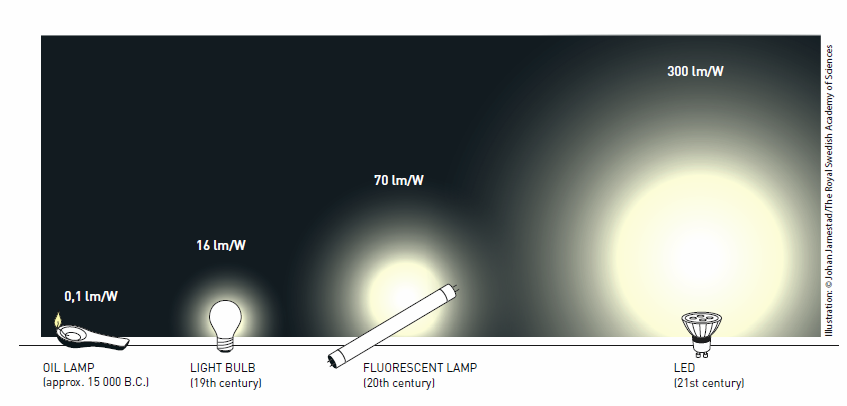Blue LED creators awarded Nobel Prize in Physics
The Royal Swedish Academy of Sciences has awarded the Nobel Prize in Physics for 2014 to Isamu Akasaki, Hiroshi Amano and Shuji Nakamura for inventing the blue LED. Isamu Akasaki is a professor at Meijo University and Nagoya University, Japan; Hiroshi Amano is a professor at Nagoya University, Japan; while Shuji Nakamura is a professor at University of California, Santa Barbara, USA.
This year's Nobel Laureates produced bright blue light beams from semiconductors in the early 1990s, prompting a fundamental transformation of lighting technology. At the time, red and green diodes had been around for a while but white lamps could not be created without blue light. This had been challenging the scientific community and industry for three decades.
Emitting a bright white light, white LED lamps are long-lasting, energy-efficient and are constantly being improved. Regular light bulbs achieve around 16lm/W and fluorescent lamps around 70. The most recent record for white LEDs, however, is just over 300lm/W. Product lifetime is also vastly improved compared to traditional lighting, reducing material consumption. Incandescent bulbs and fluorescent lights last for 1,000 and 10,000 hours, respectively, while LEDs last for up to 100,000 hours.
It is estimated that around 25% of the world's electricity consumption is used for lighting. high efficiency LEDs are therefore contributing to saving the Earth’s resources. The low power requirements of LED lighting means that solar power can be used, increasing the quality of life for over 1.5bn people who lack access to electricity grids.



